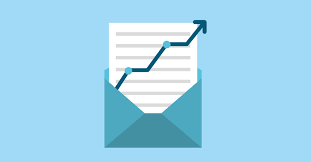
Ever feel like your emails are going straight into the void? You spend time crafting the perfect message, hit send, and… nothing. No response. No engagement. Just silence.
It’s frustrating—but you’re not alone. Whether you’re trying to get feedback, build relationships, or drive action, getting people to actually reply is a challenge.
The good news? You don’t need a complete email marketing overhaul to fix this. In fact, small, strategic tweaks can make a huge difference. Let’s break down exactly how to boost your response rates—without overcomplicating things.
Why Are Your Emails Getting Ignored?
Before we jump into the fixes, let’s get real about why your emails aren’t getting responses:
- Your subject line isn’t grabbing attention. If it’s too vague or boring, people won’t even open your email.
- Your message is too long (or too complicated). No one has time to read an essay in their inbox.
- There’s no clear next step. If the recipient doesn’t know what you want them to do, they won’t do anything.
- It feels too generic. If your email sounds like a mass blast, it’s easy to ignore.
Sound familiar? Don’t worry—you’re about to learn how to fix all of this with a few smart changes.
Keep It Simple: Shorter Emails = Higher Responses
Here’s a truth most people overlook: people don’t read long emails. They skim. If they open your message and see a wall of text, they’ll close it before reading the first sentence.
So, how do you make sure they actually read (and reply)?
✅ Get to the point. No fluff, no unnecessary details—just say what you need to say.
✅ Use short sentences and paragraphs. Keep things scannable.
✅ Write like a human. If it sounds robotic, it gets ignored.
For example:
❌ Too long and clunky:
“Dear [Name], I hope this email finds you well. I wanted to reach out regarding an opportunity to discuss your recent experience with our service. We value your feedback and would love to schedule a call at your earliest convenience to go over some questions.”
✅ Much better:
“Hey [Name], quick question—how was your experience with us? Just hit reply and let me know!”
The second version is shorter, clearer, and more personal—which makes it much more likely to get a response.
Your Subject Line: The First (and Most Important) Test
If no one opens your email, nothing else matters. Your subject line is everything.
A great subject line is:
🎯 Specific – Vague = ignored.
🎯 Conversational – Feels like a real person wrote it.
🎯 Curiosity-driven – Makes them want to open the email.
Examples:
❌ Boring & forgettable:
- “We’d Love Your Feedback” (Too generic.)
- “Reminder: Your Opinion Matters” (Sounds like an automated message.)
✅ Engaging & effective:
- “Got 30 seconds? Quick question for you.”
- “What did you think of [product/service]?”
- “Noticed something interesting, [Name]?”
These sound human and spark curiosity—which means more opens.
Make It Personal (Because No One Responds to Generic Emails)
Think about the last time you ignored an email. Chances are, it felt generic and impersonal. If an email looks like it was blasted to thousands of people, most recipients will assume their response doesn’t matter.
Want higher response rates? Make the email feel like it was written just for them.
✔️ Use their name in the subject line and greeting.
✔️ Mention something specific (like a past purchase or interaction).
✔️ Write as if you’re talking to one person.
For example:
❌ Too generic:
“Dear Customer, we value your feedback. Please take our survey.”
✅ Much better:
“Hey Sarah, quick favor—how was your last order? Any thoughts?”
The second version feels personal and real—which makes it more likely to get a response.
Use the Right Call-to-Action (CTA) to Get Replies
One of the biggest mistakes people make? Not clearly telling the recipient what to do next. If your CTA is vague or overwhelming, people will just ignore it.
A good call-to-action (CTA) should be:
🚀 Simple and easy to act on.
🚀 A single, clear step. (Too many choices = no action.)
🚀 Casual and low-pressure.
For example, if you’re requesting feedback, instead of sending a long-form survey, try including a short, friendly question. Something as simple as:
“Just hit reply and type ‘yes’ if you’re open to sharing!”
If you’re unsure how to structure an email that encourages responses, checking out a well-crafted survey email sample can help. These examples showcase effective techniques that drive engagement without feeling pushy or impersonal.
Timing Matters More Than You Think
Ever noticed how some emails get buried in your inbox while others grab your attention? Timing plays a big role.
📌 Best times to send emails:
- Mid-morning (10–11 AM) – People are settled into their workday.
- Afternoons (1–3 PM) – Post-lunch, but before the late-day slump.
- Tuesday–Thursday – Avoid Mondays (too busy) and Fridays (weekend mode).
📌 Emails to avoid sending:
- Super early in the morning (gets buried).
- Late at night (people forget about it by morning).
- Over the weekend (unless it’s urgent).
Test different send times and track your response rates. Small tweaks can lead to big improvements.
Don’t Be Afraid to Follow Up
Think one email is enough? Think again.
Most people need a gentle nudge before they actually respond. Studies show that follow-up emails double response rates—but only if they’re done the right way.
A good follow-up should be:
✅ Short & friendly. (No guilt-tripping.)
✅ A simple reminder. (Not a full rehash of your first email.)
✅ Sent 2–3 days after the first email.
Example:
“Hey [Name], just wanted to follow up on my last email. Totally understand if you’re busy—just let me know when you get a chance!”
Following up shows persistence without being annoying—which is the key to getting more replies.
Final Thoughts: Small Changes, Big Results
Boosting your email response rate doesn’t require a massive strategy overhaul. It just takes a few smart tweaks:
✔️ Keep emails short and to the point.
✔️ Write subject lines that grab attention.
✔️ Make emails feel personal and conversational.
✔️ Use a clear, easy-to-follow CTA.
✔️ Send at the right time.
✔️ Follow up when necessary.
Try just one of these changes today and watch what happens—you might be surprised at how many more people actually respond. 🚀
Write and Win: Participate in Creative writing Contest & International Essay Contest and win fabulous prizes.


